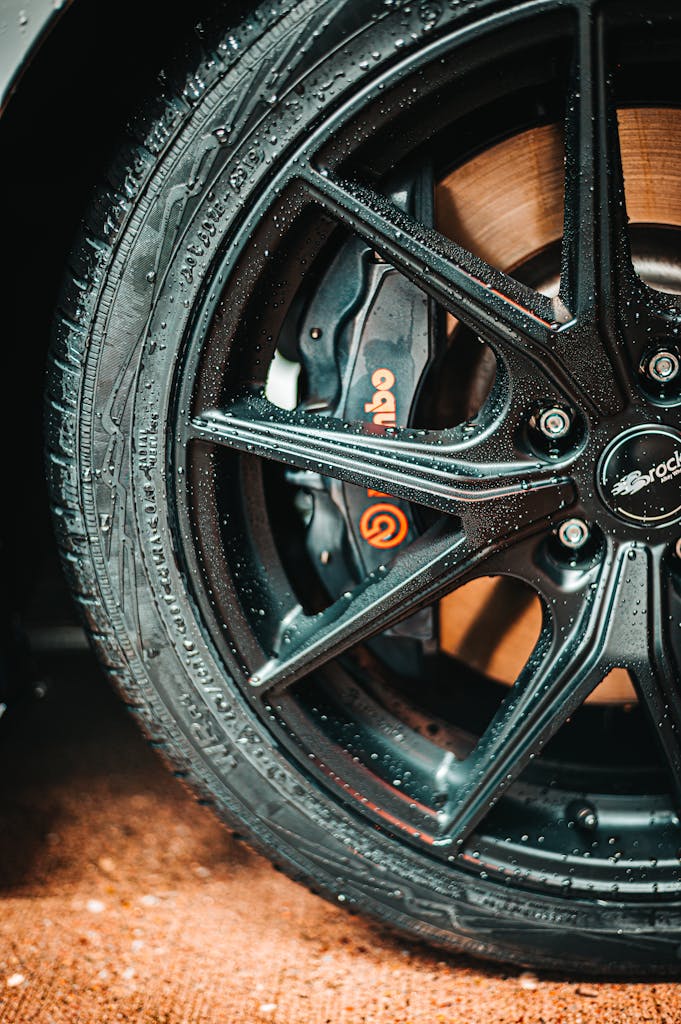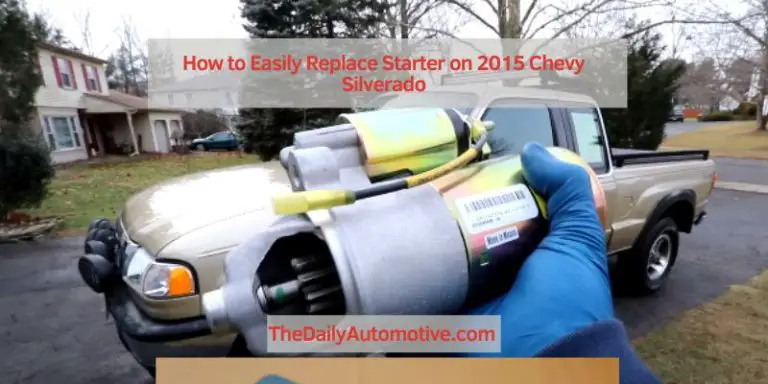How to Bleed Hydroboost Brakes Chevy: Master the Art
You can bleed Hydroboost brakes on a Chevy by locating the brake fluid reservoir, attaching a tube to the bleeder valve, and pushing the pedal while someone opens the valve until air bubbles stop coming out. Bleeding the brakes on a Chevy is a necessary task to ensure the braking system is working properly and to improve brake performance.
By following these simple steps, you can efficiently bleed the Hydroboost brakes on your Chevy and maintain optimal brake function.
Tools And Materials Needed
In order to successfully bleed the hydroboost brakes on your Chevy, you will need a few essential tools and materials. These are:
Hydraulic Jack
A hydraulic jack is crucial for safely lifting your vehicle off the ground. It allows you to access the brake components with ease and ensures a stable working environment. Make sure you have a reliable hydraulic jack that can support the weight of your Chevy.
Bleeder Kit
A bleeder kit is an essential tool for the brake bleeding process. It typically includes a clear plastic hose, a connector, and a collection bottle. The kit allows you to easily remove air and old brake fluid from the brake lines, ensuring optimal brake performance. If you don’t have a bleeder kit, you can also use a clear plastic hose and a container.
Wrenches
Having the right wrenches is crucial for removing the brake bleeder screws and attaching the bleeder kit to the brake calipers. Most brake bleeder screws require a 10mm or 11mm wrench, but it’s always a good idea to have a set of wrenches handy, including both metric and standard sizes, to accommodate any variations in your Chevy’s brake system.
Container For Brake Fluid
When bleeding the brakes, you will need a suitable container for collecting the old brake fluid. It’s important to use a clean and properly labeled container to prevent contamination. Ensure that the container is large enough to hold an adequate amount of fluid to avoid spills or overflow.
By gathering these tools and materials before you begin the brake bleeding process, you will be well-prepared to complete the task effectively and efficiently. Make sure to double-check that you have everything you need so that you can focus on bleeding the hydroboost brakes on your Chevy smoothly.
Step-by-step Guide To Bleed Hydroboost Brakes
When it comes to maintaining your Chevy’s hydroboost brakes, bleeding the brakes is an essential task. This ensures that any air bubbles trapped in the brake lines are removed, allowing the brakes to work effectively. In this step-by-step guide, we will walk you through the process of bleeding hydroboost brakes on your Chevy.
Step 1: Prepare The Vehicle
The first step in bleeding hydroboost brakes is to prepare your vehicle. Park it on a flat surface and engage the parking brake. Ensure that the engine is off and the ignition key is removed.
Step 2: Lift The Vehicle And Secure
Next, lift the vehicle using a jack and secure it using jack stands. This ensures a safe working environment and provides access to the brake components.
Step 3: Locate The Brake Bleeder Valves
Once the vehicle is lifted, locate the brake bleeder valves on each wheel. These valves are typically located on the calipers or wheel cylinders and are used to release air and old brake fluid during the bleeding process. Refer to your Chevy’s manual for the exact location of these valves.
Step 4: Attach The Bleeder Kit
With the brake bleeder valves located, attach the bleeder kit to each valve. The bleeder kit consists of a hose, a collection bottle, and a wrench. Ensure a tight fit to avoid any leakage during the bleeding process.
Step 5: Open The Bleeder Valve
Now, with the bleeder kit in place, use the wrench to open the bleeder valve on the first wheel. This allows the old brake fluid and air to escape. Make sure the hose of the bleeder kit is submerged in the collection bottle to prevent any brake fluid from spilling.
Step 6: Bleed The Brakes
At this point, it’s time to start bleeding the brakes. Have an assistant slowly press the brake pedal until the pressure builds and then hold it down. While the pedal is held down, close the bleeder valve to prevent air from re-entering the brake system. Repeat this process until you see clean brake fluid flowing through the hose without any air bubbles.
Step 7: Repeat The Process For Each Wheel
Lastly, repeat the bleeding process for each wheel, starting with the wheel farthest from the master cylinder and working your way to the closest wheel. This ensures that all the air bubbles are removed from the entire brake system.
Step 1: Prepare The Vehicle
Park the vehicle on a flat surface, engage the parking brake, turn off the engine, and remove the ignition key.
Step 2: Lift The Vehicle And Secure
Use a jack to lift the vehicle, secure it with jack stands for safety and better access to the brake components.
Step 3: Locate The Brake Bleeder Valves
Find the brake bleeder valves on each wheel, typically located on the calipers or wheel cylinders.
Step 4: Attach The Bleeder Kit
Attach the bleeder kit to each valve, ensuring a tight fit to avoid leakage during the process.
Step 5: Open The Bleeder Valve
Using a wrench, open the bleeder valve on the first wheel while ensuring the hose is submerged in a collection bottle.
Step 6: Bleed The Brakes
Have an assistant press and hold the brake pedal, then close the bleeder valve to prevent air from re-entering the brake system. Repeat until clean brake fluid flows through the hose.
Step 7: Repeat The Process For Each Wheel
Repeat the bleeding process for each wheel, starting from the farthest wheel from the master cylinder and working towards the closest wheel.
Tips And Precautions
When it comes to bleeding the hydroboost brakes on your Chevy, following the proper steps and taking necessary precautions is essential for a successful and safe process. In this section, we will discuss some important tips and precautions to keep in mind while bleeding hydroboost brakes.
Use Safety Gear
Before starting, it is crucial to ensure your safety by wearing appropriate safety gear. This includes gloves to protect your hands from brake fluid and eye protection to shield your eyes from any potential splashes or spills.
Check Brake Fluid Level
Prior to bleeding the hydroboost brakes, it is advisable to check the brake fluid level in the reservoir. This will help you identify if the fluid needs to be topped up or replaced. Low brake fluid levels can cause air to enter the system, making the bleeding process ineffective.
Take Your Time And Be Patient
When it comes to bleeding hydroboost brakes, patience is key. Take your time to properly bleed each brake line until you are sure that all the air bubbles have been eliminated. Rushing through the process can result in an incomplete bleed and compromised brake performance.
Remember, the goal of bleeding hydroboost brakes is to remove any air bubbles from the system and ensure optimal brake functioning. By following these tips and taking necessary precautions, you can perform the task efficiently while prioritizing your safety.
Conclusion
To sum up, bleeding the hydroboost brakes in your Chevy is an essential maintenance task to ensure optimal braking performance. By carefully following the steps outlined in this guide, you can effectively remove air bubbles and contaminants from the system, resulting in improved brake pedal feel and responsiveness.
Regularly bleeding your hydroboost brakes will help maintain their efficiency and keep you safe on the road. Happy bleeding!








